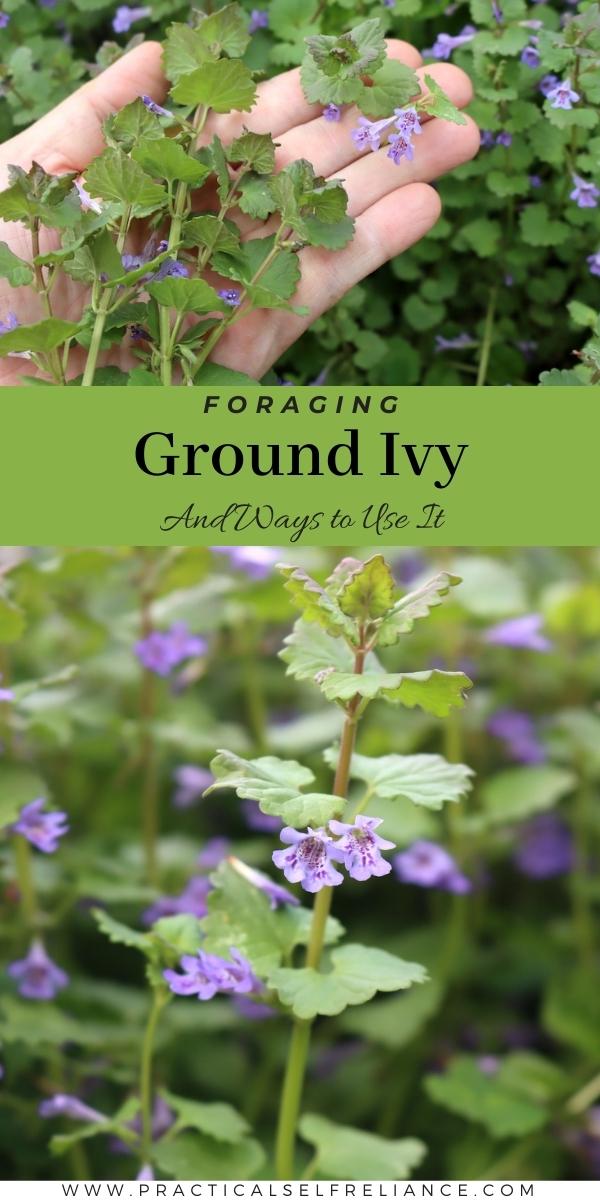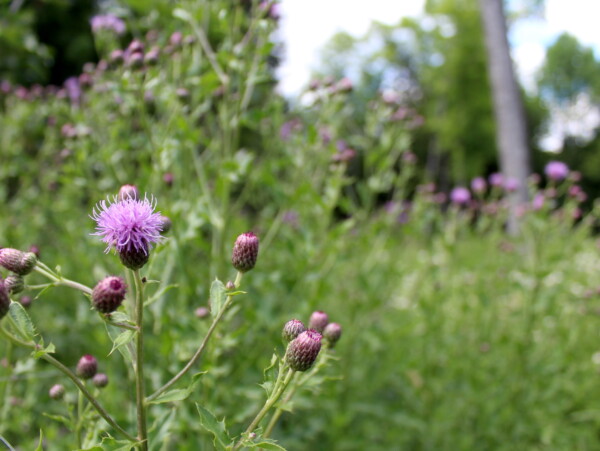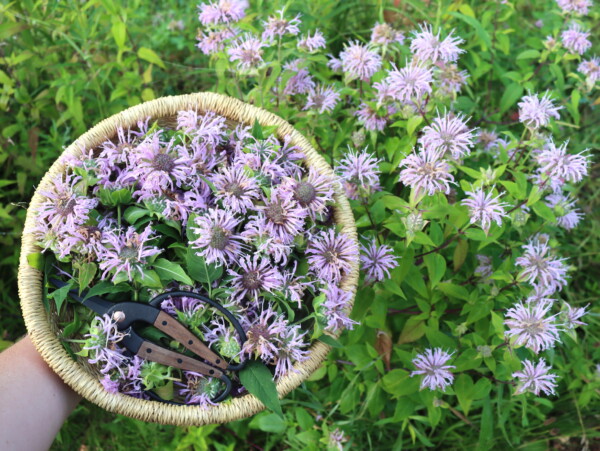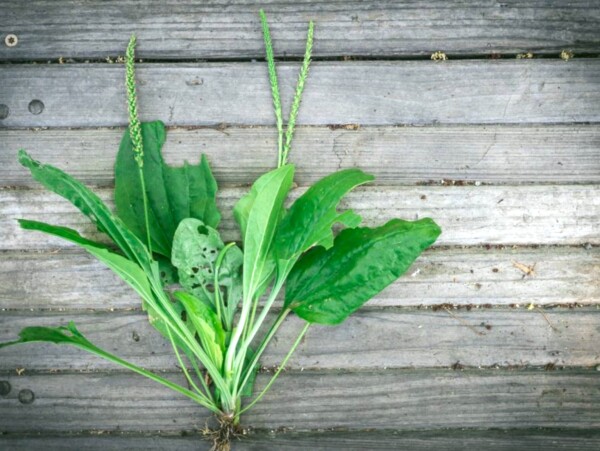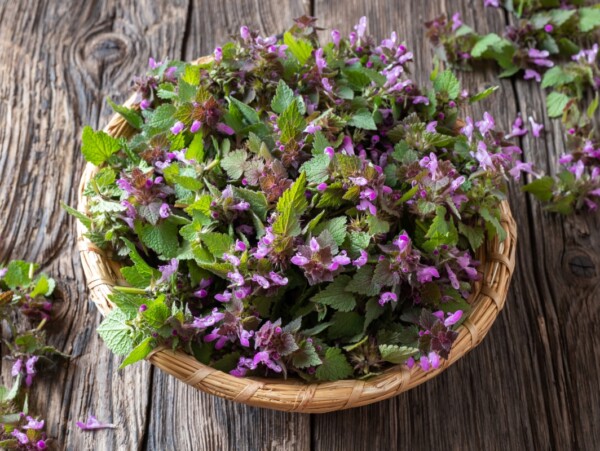Affiliate disclosure: This post may contain affiliate links. Please see our Privacy Policy.
Ground Ivy (Glechoma hederacea) is a common edible weed that’s incredibly common in lawns, fields and woodland edges. It’s not only tasty, but incredibly useful.
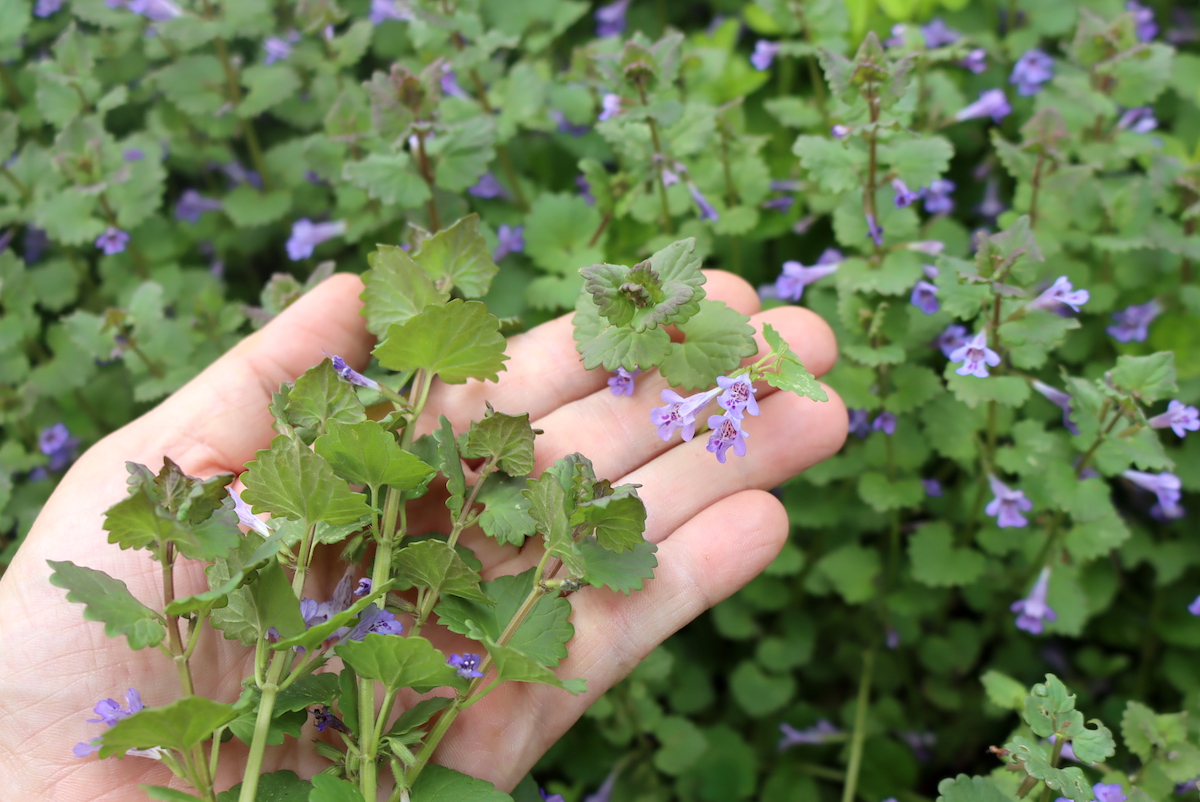
Ground Ivy is a common lawn weed all around the world, and it tends to take over moist fertile areas. Since it’s spread by both runners and seeds, if can quickly colonize big patches.
It’s taken over huge swaths of land around our compost bin, where the soil is extra rich from the nearby compost.
It’s hard to miss this beautiful ground cover, with it’s carpet of leaves and abundant crop of small purple flowers.
Though most people consider it a “weed” in their lawns, it seems like a much better ground cover than plain grass. It stays low to the ground, out competes other weeds (and grasses) and is an excellent food source for the bees.
Beyond just being a beautiful natural flowering ground cover, ground ivy is both edible and medicinal, with traditional uses that go back thousands of years.
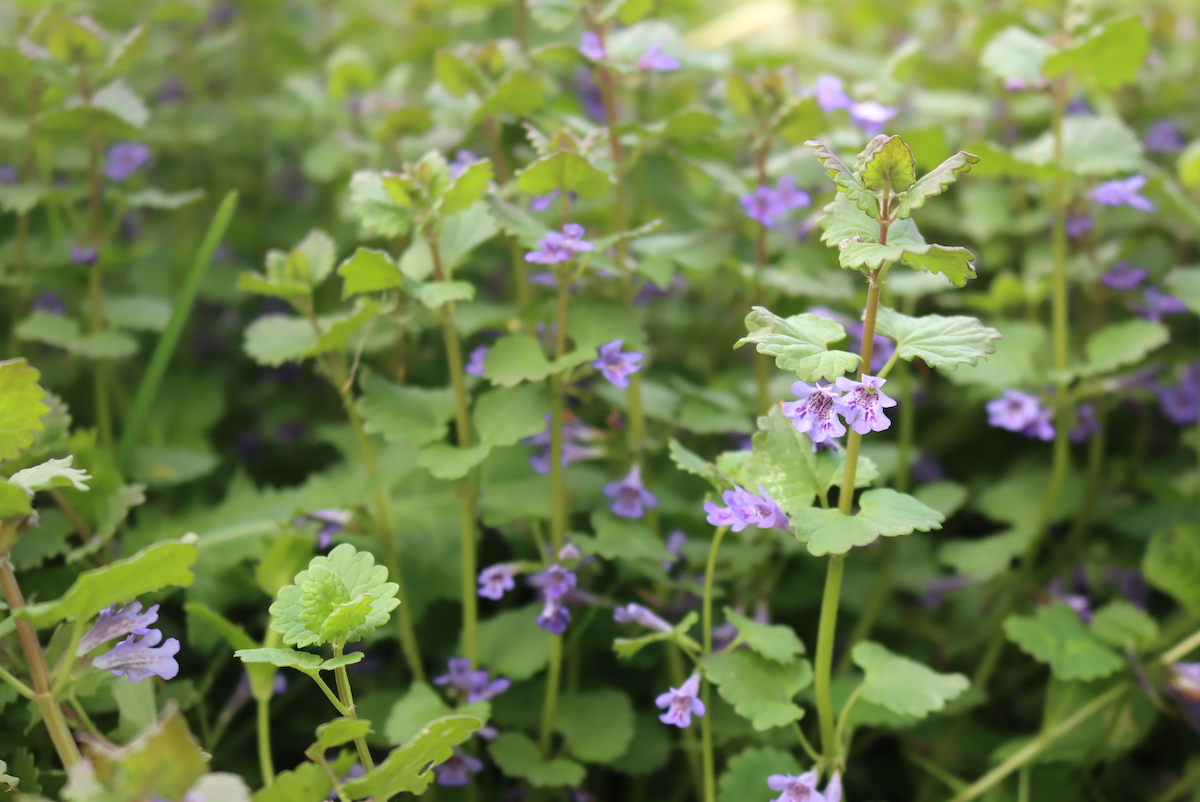
What is Ground Ivy?
Ground Ivy (Glechoma hederacea) is a non-native, perennial plant from the mint family. Colonists from Europe brought this plant to North America, and it naturalized.
It is known by various common names, including Creeping Charlie, ale hoof, field balm, tun hoof, gill-over-ground, or run-away-robin.
Most of those common names refer to it’s use in brewing traditional herbal ales in the middle ages, known as gruit. It was a common addition to everyday beers, before hops became the standard.
Is Ground Ivy Edible?
Yes, ground ivy is edible and people have consumed ground ivy for thousands of years.
It’s best harvested young, and even then, it can be quite bitter. The leaves are most often used to flavor salads, like dandelion greens, rather than forming the main bulk of the salad.
The shoots, leaves, and flowers are all edible and can be used fresh or dried. It can probably also be blanched and frozen similarly to spinach, if you’d like to preserve it.
While considered edible for humans, at least in moderation, ground ivy might be toxic to some grazing livestock such as cattle and horses.
As ground ivy often grows in lawns and waste spaces where pesticides and other chemicals may be sprayed or dumped, it’s essential to use caution when selecting ground ivy to harvest. Seek areas you know haven’t been sprayed if you intend to harvest ground ivy as food or medicine.
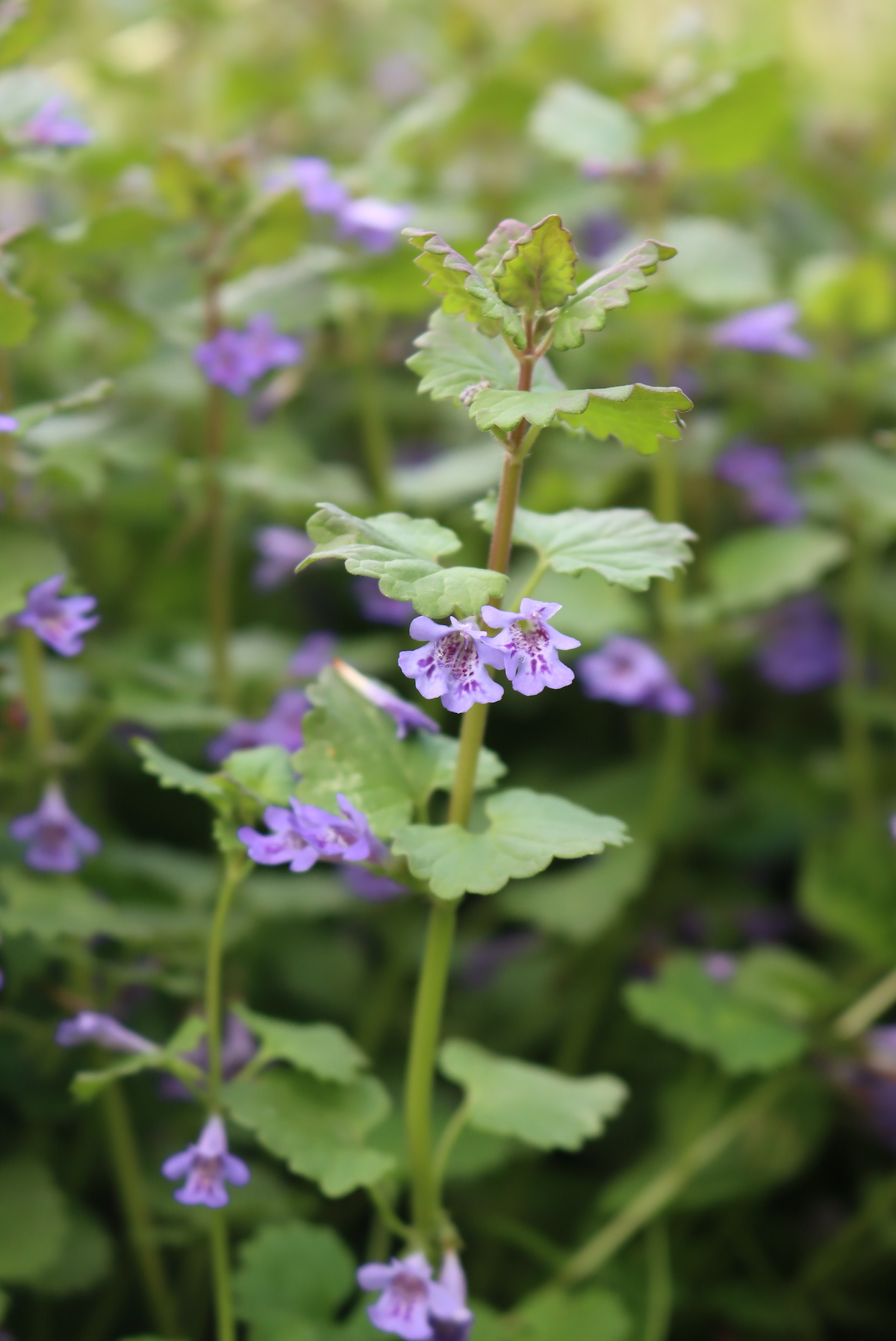
Ground Ivy Medicinal Benefits
Historically, folks have treated various ailments with ground ivy, including coughs, headaches, tinnitus, kidney diseases, fevers, flus, sunburns, diabetes, asthma, and indigestion. Traditionally herbalists believed it might have anti-inflammatory, diuretic, stimulant, anthelmintic, and calmative properties.
Some herbalists considered ground ivy a lung herb that could be used to treat bronchitis or as an astringent or expectorant. The Greek physician Aelius Galenus who died in AD 216, recommended it for treating eye inflammation.
Internally, ground ivy was often taken as a tea, tincture, or salad green for medicinal purposes. Externally it has been used as an eyewash, poultice, or compress.
Ground ivy has not been well-studied in modern times as a medicinal species, but some studies have indicated that essential oil from ground ivy may have anti-inflammatory properties.
We also know that it’s a rich source of vitamin C, potassium, and iron.
As it is still poorly understood, use ground ivy in moderation and avoid it during pregnancy and breastfeeding as a precaution.
Where to Find Ground Ivy
Ground ivy thrives over a wide range and has adapted to many areas excluding the far north and desert. While it’s native to Eurasia, ground ivy grows throughout most of the United States except Hawaii, Nevada, New Mexico, and Arizona. Ground ivy also grows in much of Canada.
Ground ivy thrives in shady areas with rich damp soil, often where grass struggles. However, it’s a tough plant and will also tolerate full sun and become established in lawns, garden beds, pastures, roadsides, and other disturbed areas as long as there’s adequate moisture.
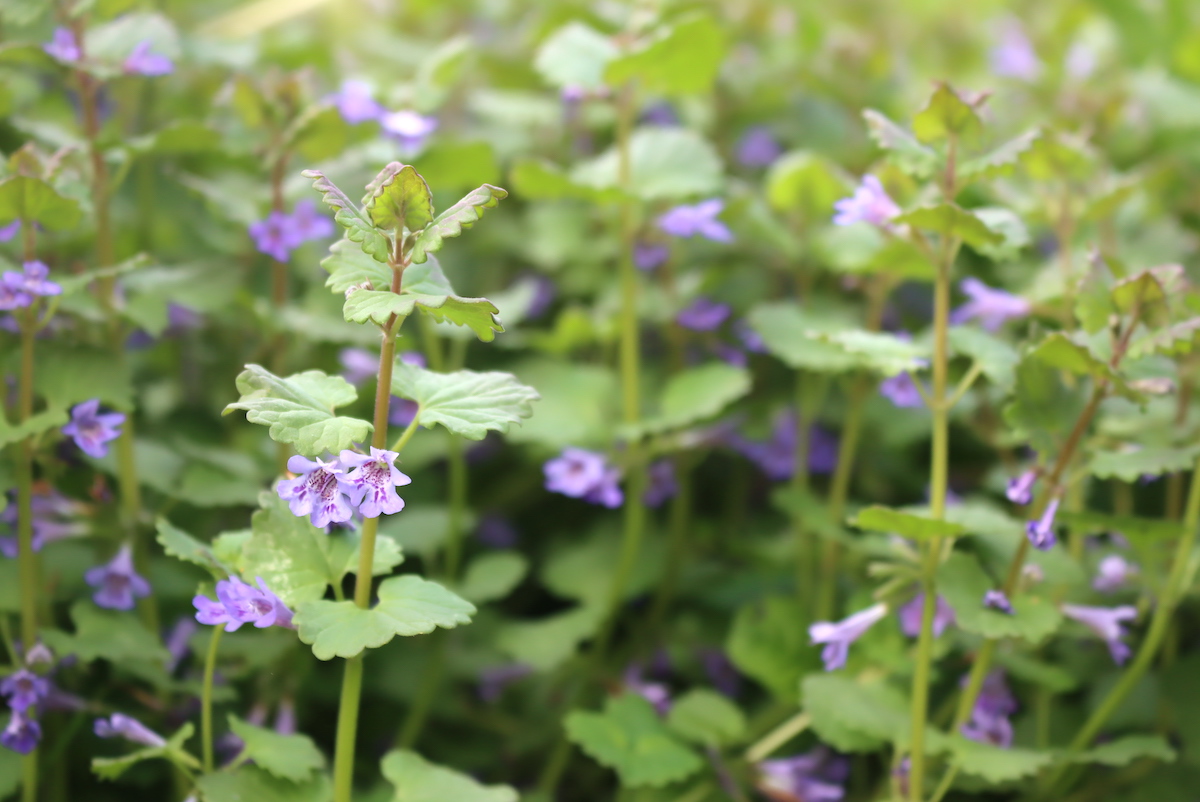
Identifying Ground Ivy
Ground Ivy is a low, creeping plant that often creates dense mats. It’s a ground cover and was once used this way in gardens. Today there are some cultivated varieties available.
It spreads quickly through two methods of reproduction. It replicates with runners, which reach out and then form roots at their nodes. This method gives the plant its common name Creeping Charlie, as it appears to slowly “creep” across your garden or another area. It also spreads through seeds.
When it flowers, it produces stems that usually reach about 8 inches tall but may be shorter depending on conditions and location.
When crushed or mowed, ground ivy gives off a minty aroma.
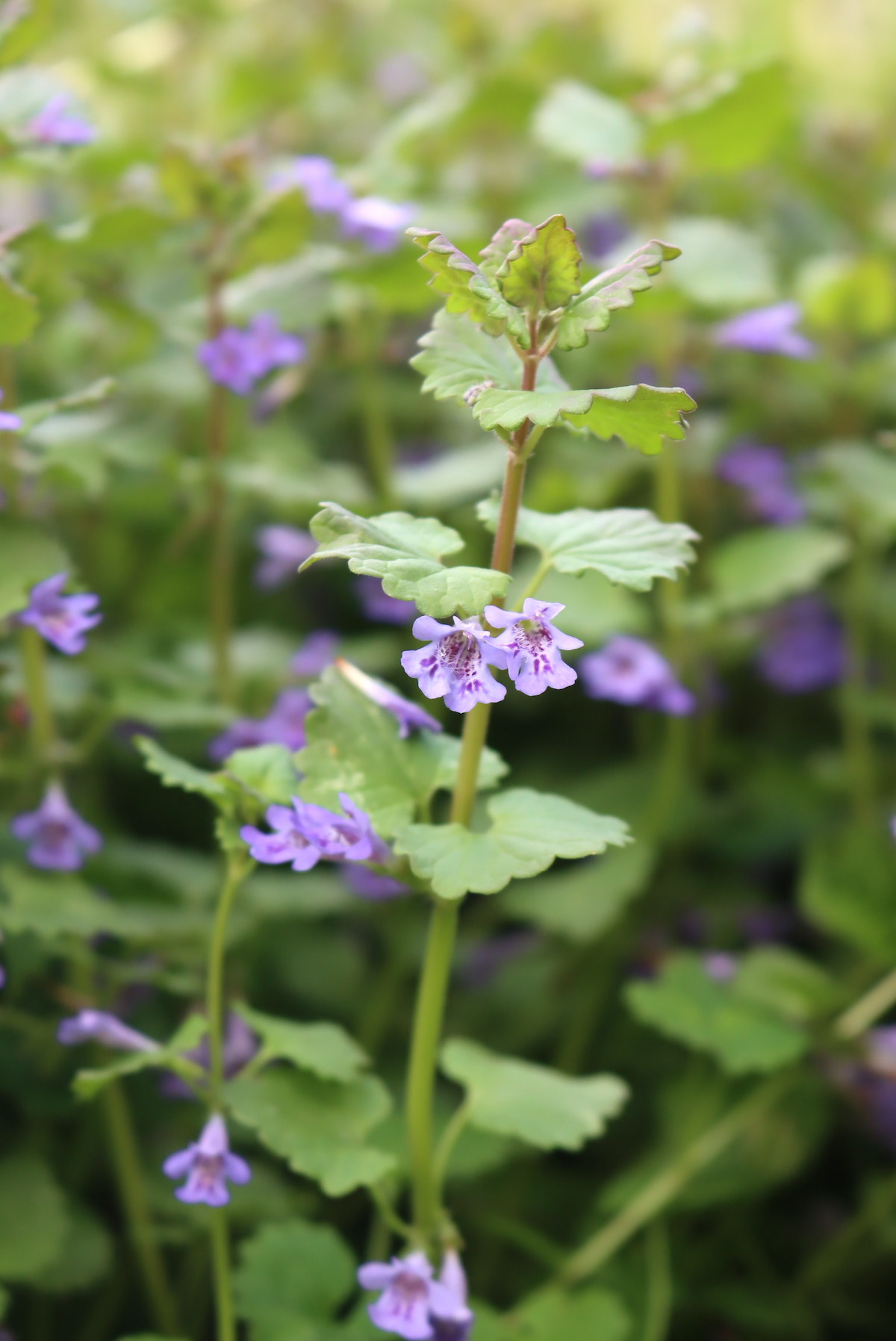
Ground Ivy Stems
As a mint or Lamiacea family member, ground ivy has tell-tale square stems.
They have vegetative stems that can reach up to 7 feet long and flower stems which grow to about 8 inches in height. The stems may be green or reddish.
Ground Ivy Leaves
Ground ivy has opposite, fan or kidney-shaped leaves with round-toothed edges and a slightly hairy upper surface. The leaves are typically 1/2 to 1 1/2 inches long and are usually green but may be purplish or reddish-green in sunny areas.
The leaves are attached to the stem by petioles from their center.
Ground Ivy Flowers
Ground ivy typically flowers from March to July. Each stem produces 3 to 7 blue-purple flowers from the leaves’ axils near the tip.
The flowers are funnel-shaped, 1/2 to 3/4 inches long, display bilateral symmetry, and have a two-lipped corolla.

Ground Ivy Look A-likes
Ground Ivy is sometimes mistaken for Common Mallow (Malva neglecta). However, Common Mallow differs in several noticeable ways:
- Common mallow leaves are sessile, meaning there’s no petiole, and they attach directly to the stem.
- Common mallow has a round stem instead of a square one.
- Common mallow has an alternate leaf arrangement rather than the opposite.
Another lookalike is Purple Dead Nettle (Lamium purpureum). Fortunately, it too differs in a few easy-to-spot ways:
- Purple dead nettle has fuzzy leaves.
- Purple dead nettle leaves are more pointed and heart-shaped than rounded and kidney-shaped.
- Purple dead nettle grows more erectly, and its leaves transition from green to purple-red or pinkish near the top of the stem.
Lastly, ground ivy can be mistaken for Henbit (Lamium amplexicaule), another member of the mint family. Henbit is distinguished from ground ivy in the following ways:
- Henbit’s leaves are roundish to ovate, and the margins are deeply scalloped, more so than ground ivy’s.
- Henbit’s upper leaves are sessile, meaning there’s no petiole, and they attach directly to the stem.
- Henbit has a single taproot and spreads primarily by seed rather than through stolons like ground ivy.
Ways to Use Ground Ivy
Though it is often overlooked, you can use this common and unassuming plant in several ways.
Harvest ground ivy for fresh use in salads or as garnish. You can also use it to flavor meat, soup, and other dishes to replace mint or thyme, though the flavor is a bit different.
One of ground ivy’s primary historical uses was in producing ale, hence the common names ale hoof, gill-over-ground, and tun hoof. Gill comes from the French word “guiller,” meaning “to ferment,” and a “tun” is a large cask used in brewing.
The Saxons and later the English used it as a flavoring and a preservative in ale before cultivating hops became widespread in the late 15th century. Today, it’s still sometimes employed by adventurous home brewers and foragers.
Ground Ivy was also occasionally used as an alternative to rennet in cheesemaking. Rennet is an enzyme that naturally occurs in the stomach of young animals and helps them to digest milk.
In cheesemaking, it coagulates the milk into solid curds and separates the whey. Before the introduction of modern synthesized rennet, people either had to slaughter one of their young animals, usually a calf, for rennet.
Ground ivy was sometimes employed as a vegetarian rennet alternative in cheesemaking recipes.
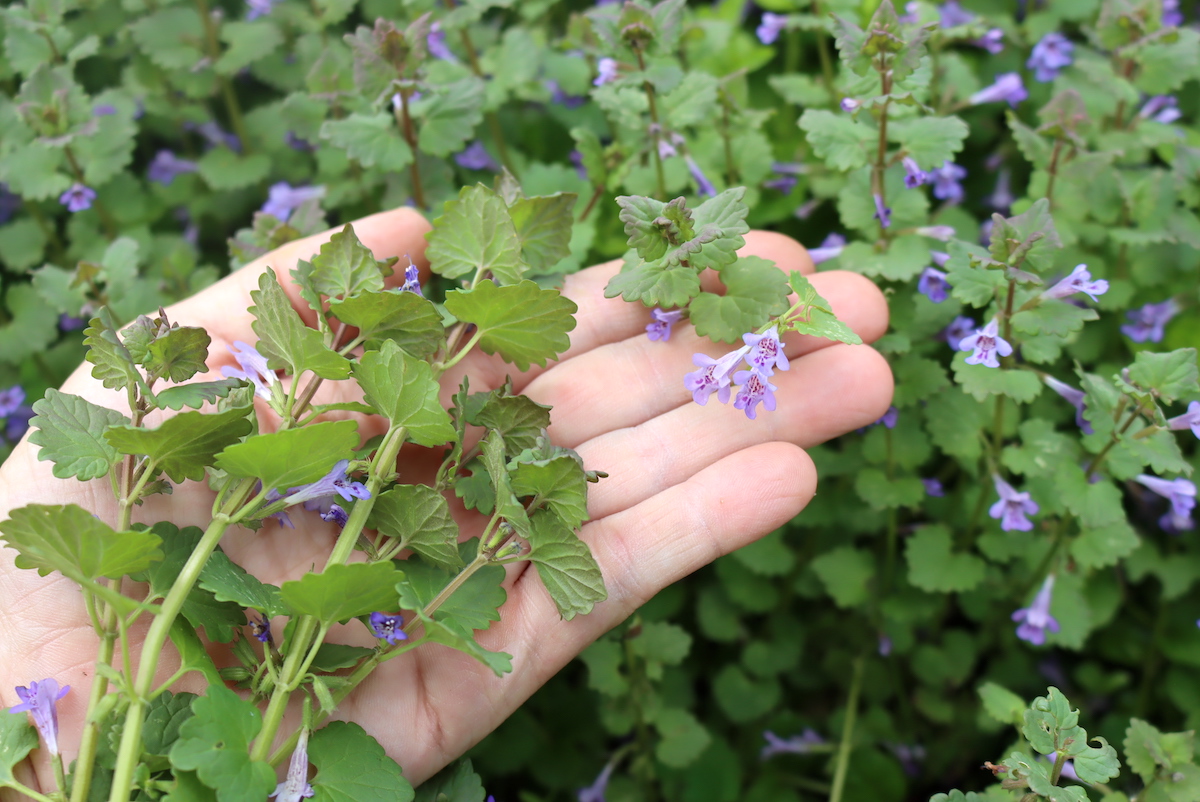
Ground Ivy Recipes
As a medicinal herb, using either fresh or dried ground ivy to make tea is a common choice. Some people find it to have a minty or slight licorice flavor. It can be bitter, and you’ll probably want to sweeten it with honey or sugar.
Home brewing can be a fun way to experiment with ground ivy. Try this simple recipe for a beer made with alehoof, another common name for ground ivy (especially when brewing).
Ground ivy can also be substituted for other mint or other aromatic herbs in various dishes. For example:
Ground ivy is sometimes included in Nine-Herb or Maundy Thursday soup, a meal commemorating the last supper.
Edible Wild Weeds
Looking for other edible wild weeds?
- Foraging Chickweed
- Foraging Yarrow
- Foraging Wild Violets
- Foraging Fireweed (Rosebay Willowherb)
- Foraging Marsh Marigold (Caltha palustris)
Foraging Guides
Looking for more edible wild plants to forage?
- Foraging Wild Black Cherry (Prunus serotina)
- Foraging Black Walnuts (Juglans nigra)
- Foraging Partridgeberry (Mitchella repens)
- Foraging Fiddlehead Ferns
- Foraging Ramps (Wild Leeks)
- Foraging Wild Asparagus
